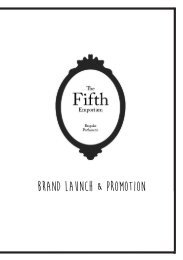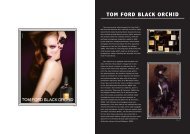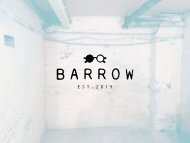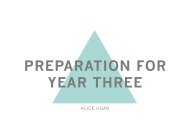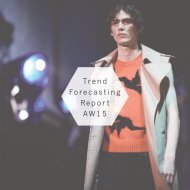Dissertation
A self-devised dissertation and final year project focused on providing a personalised beauty platform for women over 45.
A self-devised dissertation and final year project focused on providing a personalised beauty platform for women over 45.
You also want an ePaper? Increase the reach of your titles
YUMPU automatically turns print PDFs into web optimized ePapers that Google loves.
Many of today’s consumers are consumed by technology, and none as much as<br />
‘Generation Z’. Alex Williams, writer for The New York Times, discusses how ‘Generation<br />
Z’ may be “emerging as the next big thing for market researchers, cultural observers<br />
and trend forecasters” and are “primed to become the dominant youth influencers of<br />
tomorrow” (Williams, A. 2015). Whilst this consumer information is extremely relevant to<br />
any brand or marketers looking to target a tech-savvy consumer; appropriating brands<br />
to this consumer can mean avoiding issues that result is shutting out other, large market<br />
sectors. For example, an older generation, such as the ‘Baby Boomers’, that may be a lot<br />
more sceptical of technological, internet-based brands. In fact, Mintel found that “44%<br />
of women in the Baby Boomer generation are classified as ‘Technophobes’” (Davies, P.<br />
2015a). However, Baby Boomers are currently the second largest generation in the UK<br />
(Mintel. 2015), so addressing the issues these consumers have with technology could<br />
have great potential; and may also result in stronger ideas for brand experiences, which<br />
avoid gimmicks and focus on honesty and accessibility. A 2015 Mintel report on Baby<br />
Boomers and Technology, found that “around half (51%) of ‘Technophobes’ aged 51-<br />
69 prefer to receive in-store advice over any other customer service channel” (Davies,<br />
P. 2015a), showing that physical retail is still of importance to this generation. This<br />
may mean a ‘phygital’ retail experience may be the perfect answer for introducing this<br />
consumer area to the benefits of integrated online and offline retail.<br />
[Fig 34] Innovation Curve (2016).<br />
One area where this consumer is the most unidentified by retail may be within the<br />
beauty industry. Within a primary research questionnaire, it was found that 72.5% of<br />
women over the age of 40 wear makeup everyday, and 56.8% use a daily cleansing<br />
skincare routine (Appendix F.2). This idea is supported by the Mintel report on Facial<br />
Skincare in the UK from May 2014, in which they found that “eight in 10 women used<br />
facial moisturiser in the 12 months to March 2014 (79%), with a further 37% using antiageing<br />
products” (Khanom, R. 2014). This data proves that cosmetics and skincare is an<br />
integral part of their daily lives, and consequently an area that brands should be tapping<br />
into. There is no denying that there are several brands on the market catering to Baby<br />
Boomers, but many fail to see that there is a wealth of opportunity to make much more<br />
out of their brand experiences in order to fully engage the consumer. It is equally easy<br />
to identify many brands who have created ‘phygital’ brand experiences in the past few<br />
years. Yet, the beauty industry may be the one retail sector that is yet to make the most<br />
of ‘phygital’ experiences, most specifically brands catering to an older demographic.<br />
As demonstrated in Rogers’ Diffusion of Innovation Theory (Rogers, E.M. 1962), late<br />
adoption of this trend places the beauty industry within the ‘Late Majority’ category.<br />
Identifying the potential within the ‘phygital’ trend could help brands within the Beauty<br />
Industry to create more meaningful brand-consumer relationships and experiences; it<br />
could also be the answer to providing an appropriate platform for targeting a female<br />
consumer aged between 45 and 60.<br />
37




